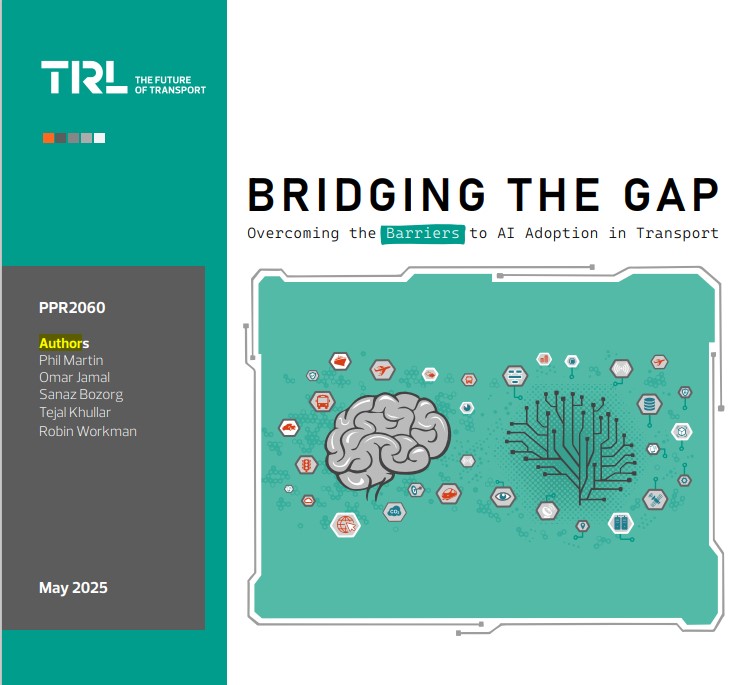The transport sector has the chance to better embrace the use of AI, a new report from Transport Research Laboratory (TRL) has said.
Bridging the gap: Overcoming the barriers to AI adoption in transport is based on a series of workshops which brought together more than 60 stakeholders from across the public, private, and academic sectors.
It was designed to identify the main barriers preventing the transport sector from embracing AI. It concludes with five key “opportunities” for the sector to enable faster, wider adoption.
Those obstacles include a lack of infrastructure to support AI applications, low levels of AI literacy and limited workforce upskilling, public distrust of AI-enabled systems, and concerns about environmental impact, according to the report’s authors.
The TRL report outlines the five recommendations for the transport sector to better use AI as: enhance clear governance and regulation, balance innovation and data protection through collaboration, enhance technical skills and expertise, build public confidence in AI adoption, and ensure investment in infrastructure to support innovation and impact.
The document states: “The integration of AI in the transport sector presents a significant opportunity to enhance efficiency, safety, and sustainability. Yet, AI adoption faces several barriers that hinder its full potential, including technical and non-technical challenges.
“These challenges contribute to a fragmented data landscape, slowing innovation and limiting AI’s transformative potential. To address these issues, a structured approach to overcoming these barriers is needed.”
One of the case studies in the report features the Bus Open Data Service (BODS). The report centres in this case on criticism that the data is lacking in accessibility information, resulting “in distrust from vulnerable passengers from using public buses”.
In relation to BODS, the authors add: “The findings indicate that good communications, along with AI literacy and awareness, is becoming increasingly important to improve public trust and social acceptance.
“Without transparency and clear regulations, scepticism may continue to grow, hindering AI adoption timelines.”
Although the report is aimed generally at the transport sector, it highlights real-time bus occupancy as a feature currently facilitated by AI.
The coach sector heard in March of the opportunities presented by AI which may aid future growth.



























